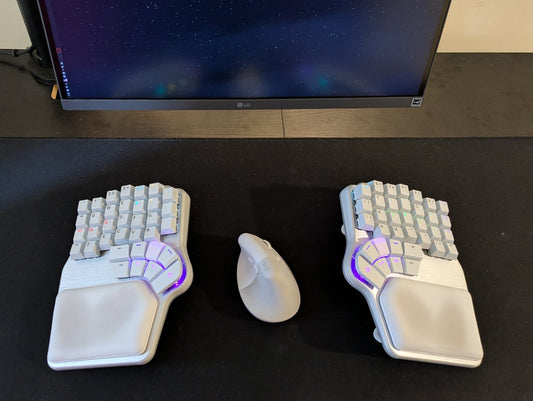Bluetooth is everywhere. From wireless earbuds to smart home devices, from your mobile phone to your keyboard. But what actually is Bluetooth? Can it really travel up to a kilometer? And is it true that the name is taken from a Viking king?
What is Bluetooth?
Simply put, Bluetooth uses radio frequencies to 'chat' with other electronic devices without actually needing to see them.
This is much more advanced than the infrared technology in a standard TV remote that can only transfer information with a direct line of sight.
This extraordinary wireless technology allows communication between two devices and the sharing of data and files between paired devices.
Generally, the maximum distance for Bluetooth between paired devices rests at around 100 feet. Of course, this depends on what kind of walls and objects are between those devices.

However, Bluetooth long range, also known as Coded PHY, is a new mode of Bluetooth that has been shown to travel up to a kilometer! That's 3,280 feet! Or the equivalent of 3.3 Eifel towers!
Not only is Bluetooth the present, but it's also the future. But what about its past?
The history of Bluetooth
Well, back in 1994, with the immense growth of mobile phones and the popularity of wireless headsets, Dr. Jaap Haartsen was tasked by Ericsson with finding and developing a short-link radio technology.

By experimenting with various factors and assets, Haartsen was finally able to create the technology that used UHF radio waves at 2.4 GHz.
While operating at a short range, he made this protocol consume a relatively low amount of energy. Armed with this new technology, Ericsson met with other industry leaders, Nokia and Intel, to plan the standardization of this new, nameless, short-range radio tech.
During this meeting, Jim Karduch from Intel took inspiration from his interest in Norse history to suggest the temporary code name: 'Bluetooth' after King Harald Bluetooth.
Where is the name Bluetooth coming from?
Harald 'Bluetooth' Gormsson was the Norse king of Denmark between 958 and 986 CE.

Don't let those devilish good looks fool you!
The nickname came about because of his supposed rotting tooth that had turned from a pristine white to a greyish blue... blå meaning Blue, tand meaning Tooth 🫐🦷
King Harald Bluetooth was not only known for his blue tooth but also for his work in uniting Scandinavian tribes into a single kingdom. Under his reign, King Harald Bluetooth also ordered the construction of the oldest known bridge in Scandinavia, the Ravning Bridge.

Which still stands today, kinda...

He was pretty good at connecting things, which seems rather fitting, don't you think?
Back to modern times
Jumping back to 1996, the name 'Bluetooth' was only meant to serve as a temporary placeholder until a better name was found.

Fortunately, a better name couldn't be found in time for the launch of this new technology, and thus, Bluetooth was launched with its first hands-free headset in 1999.

Keyboards and Bluetooth connectivity
Fast forward 24 years, and Bluetooth has worked its way into almost every electronic device on Earth; and rightly so.
That's why we decided to create the FIRST-EVER split columnar keyboard that allows wired, low-latency radio frequency and Bluetooth connectivity.

With the Dygma Defy, you can connect via Bluetooth to up to 5 devices at a time. We've even color-coded the keys on the Defy's Bluetooth pairing layer for easy pairing and switching between devices.
Blue keys represent available channels, white keys represent assigned channels, and the green key represents the currently active channel.

Our Bluetooth range sits at a comfortable 33 feet. However, for those who like to sit even farther away from their desk, we've also built in Low-Latency Radio Frequency to our Defy. This gives you a maximum range of up to 66 feet!

If you'd like to learn how to set up and pair your Defy, check out our video on exactly how to do so.
We hope you found this article interesting and you could learn from it! And now you know what EXACTLY Bluetooth was named after.
Skol!









